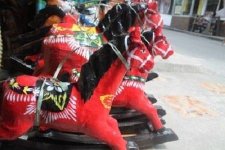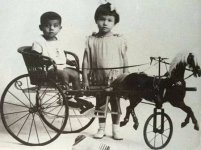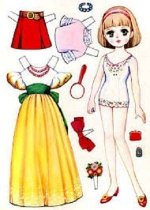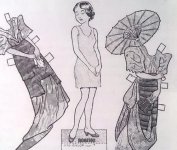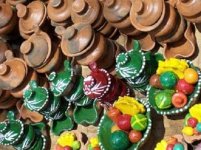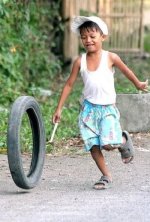capslocked
Forum Veteran
- Joined
- Apr 14, 2015
- Posts
- 2,125
- Reaction
- 770
- Points
- 999
Kids (and adults) today are often too absorbed in playing digital games, so much so that we no longer know or remember how to play with traditional Filipino toys.
Unlike their virtual counterpart, the old-fashioned Filipino toys nurtured our creativity and built a sense of teamwork among our peers. Heck, you can even create your own toys by using what was already available around you. Necessity, after all, is the mother of invention
Although we now live in a high-tech world, it makes sense to find a perfect balance between allowing our kids to play with their gadgets and introducing them to the toys that have madeYou do not have permission to view the full content of this post. Log in or register now.who they are. Here are a few unforgettable toys and games that will make every true Pinoy extremely nostalgic:
1. Tirador.
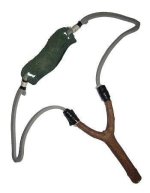
Source: Wikimedia Commons
Slingshot is one of the oldest toys in the world, dating as far back as ancient times when it was used both as a weapon and hunting tool. It’s Pinoy version, called tirador, is an improvised toy made of a Y-shaped piece of hardwood (or branch of a tree) and rubber strips taken from the inner tube of a car wheel.
A leather pocket attached to the strips is pulled back in order to launch the projectile–usually a stone or a seed.You do not have permission to view the full content of this post. Log in or register now.kids use tirador either to get high-hanging fruits or hunt small animals such as birds.
2. Sungka Board.
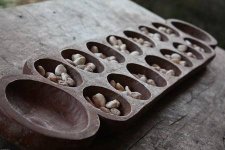
Source: dbgg1979 via Flickr
An indoor Filipino game, sungka is actually a member of the mancala (“count and capture”) family of board games, and has its counterpart in different Southeast Asian regions and countries as far as Madagascar.
A sungka board has seven cups for each of the two players–six cups will hold the cowrie shells (stones or fruit seeds can also be used), while the seventh cup will serve as the player’s home base. The goal is to distribute the shells in a counterclockwise fashion, with the player who gathers the most number of shells in his or her home base declared as the winner.
Although considered as a toy by many, the sungka board is also used by some Filipinos to foretell future events. According to an article published in the Indian Journal of History of Science, the sungka board in the Philippines “is occasionally used for popular divination, especially by elders enquiring on whether travel by youths is auspicious on a certain day, or by girls interested in finding out whether and when they will get married.”
3. Holen or Jolen.
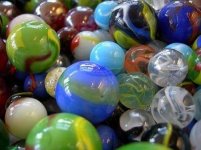
Source: Wikimedia Commons
Another popular toy that traces its roots to ancient civilizations, the marbles come in different sizes and are usually made of glass with melted pigments. Known toYou do not have permission to view the full content of this post. Log in or register now.kids as holen or jolen, these toys are played indoors or outdoors and encourage the players to get down and dirty.
Different variations of the game exist, the most popular of which require a player to flick a marble and hit a group of marble inside a circle. Those that went outside the circle automatically become part of the winning player’s collection.
4. Saranggola.
You do not have permission to view the full content of this post. Log in or register now.
Photo Credit: Pauline Balba via Flickr
Saranggola, or kite in English, is another favorite outdoor toy of Filipinos. Although the kite is not an original Filipino invention, the saranggola from our childhood was memorable because it was a product of ingenuity.
Regular saranggola is usually made of barbeque sticks and plastic bags, with the Manila hemp twine serving as its tail. Saranggola is also known by its other names like boka-boka (smaller and usually made of paper), guryon, tsapi-tsapi, and portagis.
5. Vintage Basketball-Themed Action Figures.
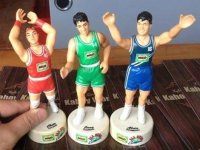
Photo Credit: The Filipino Picker Kyle Gianan’s Facebook Page
These limited-edition sharpeners, featuring some of the most popular Filipino basketball players of the ’90s, were given as freebies for every purchase of a popular energy drink.
The sharperners-cum-action figures ρáíd tribute to the career highs of such influential basketball athletes such as Benjie Paras (not in the picture), Jerry Codiñera (green), Chito Loyzaga (red), and Alvin Patrimonio (blue).
This set of vintage toys also evokes memories of MILO caravan, during which the popular brand visited our respective schools and treated us with a glass of delicious chocolate energy drink.
6. Trumpo.
You do not have permission to view the full content of this post. Log in or register now.
Photo Credit: Nico Dela Cruz via Flickr
The trumpo or Philippine tops is a conical toy of ancient origins that had fascinated Pinoy kids long before the advent of Beyblades. It is similar to the American top, but much smaller. Although you could buy ready-made tops, most kids back then preferred to have an improvised trumpo, usually carved from hardwood or guava branches.
The typical trumpo has an iron-nail pivot and is wrapped with nylon lines attached to a stopper held between the player’s fingers. It also comes in various shapes and designs–from the wooden Ifugao top “with a groove at its waist, its pivot the extension of its body”to the Maranao version in Mindanao that has “silver or copper bands incised with decorations.”
Trumpo is ideally played by two or more people. Kids would often throw their tops on a flat surface and let them spin and outperform each other. The player with the last trumpo standing becomes the winner.
7. Teks.
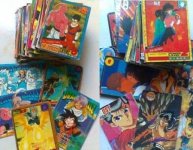
Dragon Ball Z (left) and Ghost Fighter (right) anime collectible cards of the ’90s. Source: fiel-kun.phc.onl/#forbidden#
Popularly known to Filipino kids as “teks,” these cards are similar to NBA collectible cards, except the former were commonly played in a betting game wherein the winning player takes home the cards.
Printed on cardboard, the “teks” usually depicted TV shows or movies that were popular at the time they were released (for ’90s kids, think Mari Mar, Sailor Moon, Ghost Fighter, Dragon Ball Z, BT X, and Zenki among others.)
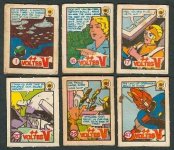
1970s Philippines “teks.” Photo Credit: Pinoy Kollektor
Back in the day, you could trade these cards with your childhood barkada, or you could join a game where the players would flip the cards in the air and bet which side will come up. Before or after the game, players would usually count their respective cards while uttering “I-sa! Dala-wa!, Tat-lo! A-pat! Li-ma!” and so forth.
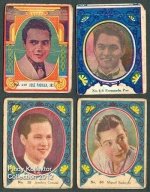
1930s Philippines “teks” featuring Filipino actors Jose Padilla Jr., Fernando Poe, Josefino Cenizal, and Miguel Barbeyto. Photo Credit: Pinoy Kollektor.
Unknown to most younger generations, however, the Pinoy teks already existed as early as the 1930s. But instead of characters from animated TV shows, these early edition of trading cards featured popular pre-war Filipino movie stars like Fernando Poe Sr., Rogelio dela Rosa, Tia Duran, Mary Walter, Rosa del Rosario, and Leopoldo Salcedo. The Filipino teks then slowly evolved, with its size getting smaller and smaller as time went by.
8. Pogs.
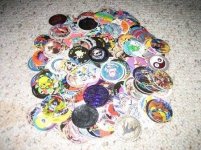 Pogs is the circular version of “teks.” School-age children from the late ’80s and early ’90s grew their pogs collection also by playing with their peers. The game requires getting the same number of pogs from each player and forming a stack. After a few throwing and slamming, each winning player will get their share of the pogs that land face up.
Pogs is the circular version of “teks.” School-age children from the late ’80s and early ’90s grew their pogs collection also by playing with their peers. The game requires getting the same number of pogs from each player and forming a stack. After a few throwing and slamming, each winning player will get their share of the pogs that land face up.
The name “pogs” is believed to have originated from a brand of juice called POG (short for passion fruit, orange, and guava), the bottle caps of which were first used to play the earlier version of the game.
The gameplay, on the other hand, is much older than most people think; pogs is said to have evolved from the old Japanese game of Menko in which the players flip their opponents’ cards that were made from ceramics, clay, or wood.
9. This LEGO Knockoff (a.k.a. Poor Man’s LEGO).
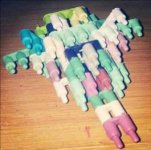
Source: marlonizerphc.onl/#forbidden#
Although it pales in comparison with the original LEGO in terms of quality and design, this knockoff provided many not-so-privileged kids with enough tools to explore their creativity.
Usually sold at sari-sari stores near public schools, these so-called “Pinoy LEGO” gave kids a chance to create their own makeshift robots, airplanes, and skyscrapers, just to name a few.
10. Sipa.
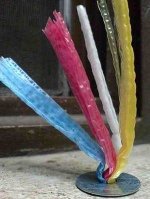
Source: TagalogLang.com
Made of small metal washer and colorful plastic straws serving as its tail, this shuttlecock-like toy is used in sipa, a game that had been the country’s national sport until it was replaced by Arnis in 2009.
Sipa, which shares similarities with sepak takraw and China’s jianzi, requires balance and agility. No wonder why kids who played it back then were physically fit and had awesome kicking styles to boot.
11. Coconut Leaf Balls.
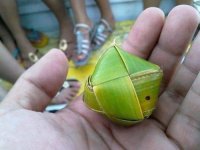
Source: missosology.info
Coconut leaf toy is to Philippines as origami is to Japan. kids who grew up in farms or mountainous provinces took delight in seeing their parents or grandparentsas they transformed coconut leaves into toys in the shape of balls or animals.
Take note that this coconut leaf ball is similar but quite different from the diamond-shaped or heart-shaped woven coconut palm primarily used by Cebuanos to cook the pusò, also known as hanging or palm wrapped rice.
12. Yo-yo.
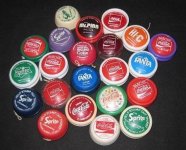
Coca-Cola Company’s Russell yoyos that became popular in the Philippines during the 1970’s and 1980’s. Photo Credit: Pinoy Kollektor
Although its rudiments already existed in ancient Greek and Chinese civilizations, the yoyo only entered the international toy market in the 1930’s with the establishment of the Duncan Yoyo Company. An American named H.B. Preston, founder of the company, reportedly bought the rights to the toy from its original inventor, ahouseboy named Pedro Flores.
In the ’70s and ’80s, the Coca-Cola Company in the Philippines gave away limited-edition Russell yoyos to whosoever finds a “FREE Yoyo” mark under the bottle cap. These yoyos, now a collector’s item, were made in the Philippines and distributed worldwide. And so started the “yoyo craze” in Manila, during which noontime shows such as Student Canteen aired exhibition contests to further promote the toys.
13. Vintage “Jollibee Kiddie Meal” Toys.
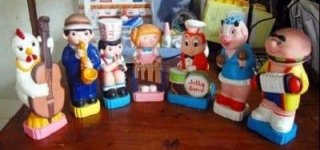
Source: You do not have permission to view the full content of this post. Log in or register now.
One of the most successfulYou do not have permission to view the full content of this post. Log in or register now.fast food chains in history, Jollibee, just like its competitors, launched several promotional toys in the past.
The most memorable, of course, were those first few toys released during the company’s early years. Examples of these were the Jollibee kiddie band and the kiddie train, both of which featured the original mascots of the company, namely: Popo (representing french fries); Hetty (spaghetti); Mr. Yum (burgers); Champ the boxer (ρrémíùm hamburger); Chickee (fried chicken a.k.a. Chickenjoy); and Mico and Lady Moo (for milkshakes).
14. Rubber Band.
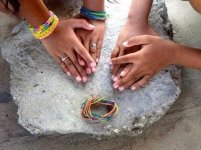
Photo Credit: Zyron Joseph Lacambra/UNICEF
The rubber band is everykid’s all-purpose toy: it can be used to play a competitive game called dampa with your friends; or as a weapon to hit the bully or the bully’s victim. You can also tie several rubber bands together to form a makeshift toy long enough to be used for the Chinese Garter game.
15. The Pinoy ‘Plastic Balloon.’
Notwithstanding the fact that it smells like paint thinner, the plastic balloon became the addictiveoy of the ’90s. To play with it, you first squeeze the tube to get a small portion of the resin-like substance which you will then roll to form a ball. Put the substance at the tip of the straw and slowly blow air until a balloon is formed.
For starters, the art of forming the perfect plastic balloon requires some skills–and you can master them through practice. And unlike ordinary balloons, you can easily repair small holes in a plastic balloon by using your mouth to blow air and eventually seal the said hole.
16. Aroma Beads (a.k.a. “Kisses”).
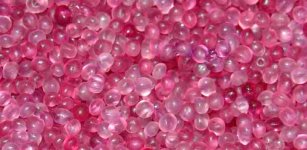 Popularly known as “kisses,” these aroma beads aren’t actually toys to begin with. However, it became a source of amusement for ’90s kids, so much so that an urban legend was born from this harmless air freshener. Youngsters who bought the story went as far as putting the “kisses” to a wet cotton inside a matchbox, believing that doing so would get these “kisses” *******t and eventually multiply itself almost magically.
Popularly known as “kisses,” these aroma beads aren’t actually toys to begin with. However, it became a source of amusement for ’90s kids, so much so that an urban legend was born from this harmless air freshener. Youngsters who bought the story went as far as putting the “kisses” to a wet cotton inside a matchbox, believing that doing so would get these “kisses” *******t and eventually multiply itself almost magically.
Sadly, it was indeed a mere You do not have permission to view the full content of this post. Log in or register now.. Aroma beads are super absorbent, up to 30% to 40% fragrance oil. Once it absorbs a liquid, it tends to increase in size and therefore creates an illusion that it somehow multiplies. And so started the story that fooled us all.
Unlike their virtual counterpart, the old-fashioned Filipino toys nurtured our creativity and built a sense of teamwork among our peers. Heck, you can even create your own toys by using what was already available around you. Necessity, after all, is the mother of invention
Although we now live in a high-tech world, it makes sense to find a perfect balance between allowing our kids to play with their gadgets and introducing them to the toys that have madeYou do not have permission to view the full content of this post. Log in or register now.who they are. Here are a few unforgettable toys and games that will make every true Pinoy extremely nostalgic:
1. Tirador.

Source: Wikimedia Commons
Slingshot is one of the oldest toys in the world, dating as far back as ancient times when it was used both as a weapon and hunting tool. It’s Pinoy version, called tirador, is an improvised toy made of a Y-shaped piece of hardwood (or branch of a tree) and rubber strips taken from the inner tube of a car wheel.
A leather pocket attached to the strips is pulled back in order to launch the projectile–usually a stone or a seed.You do not have permission to view the full content of this post. Log in or register now.kids use tirador either to get high-hanging fruits or hunt small animals such as birds.
2. Sungka Board.

Source: dbgg1979 via Flickr
An indoor Filipino game, sungka is actually a member of the mancala (“count and capture”) family of board games, and has its counterpart in different Southeast Asian regions and countries as far as Madagascar.
A sungka board has seven cups for each of the two players–six cups will hold the cowrie shells (stones or fruit seeds can also be used), while the seventh cup will serve as the player’s home base. The goal is to distribute the shells in a counterclockwise fashion, with the player who gathers the most number of shells in his or her home base declared as the winner.
Although considered as a toy by many, the sungka board is also used by some Filipinos to foretell future events. According to an article published in the Indian Journal of History of Science, the sungka board in the Philippines “is occasionally used for popular divination, especially by elders enquiring on whether travel by youths is auspicious on a certain day, or by girls interested in finding out whether and when they will get married.”
3. Holen or Jolen.

Source: Wikimedia Commons
Another popular toy that traces its roots to ancient civilizations, the marbles come in different sizes and are usually made of glass with melted pigments. Known toYou do not have permission to view the full content of this post. Log in or register now.kids as holen or jolen, these toys are played indoors or outdoors and encourage the players to get down and dirty.
Different variations of the game exist, the most popular of which require a player to flick a marble and hit a group of marble inside a circle. Those that went outside the circle automatically become part of the winning player’s collection.
4. Saranggola.
You do not have permission to view the full content of this post. Log in or register now.
Photo Credit: Pauline Balba via Flickr
Saranggola, or kite in English, is another favorite outdoor toy of Filipinos. Although the kite is not an original Filipino invention, the saranggola from our childhood was memorable because it was a product of ingenuity.
Regular saranggola is usually made of barbeque sticks and plastic bags, with the Manila hemp twine serving as its tail. Saranggola is also known by its other names like boka-boka (smaller and usually made of paper), guryon, tsapi-tsapi, and portagis.
5. Vintage Basketball-Themed Action Figures.

Photo Credit: The Filipino Picker Kyle Gianan’s Facebook Page
These limited-edition sharpeners, featuring some of the most popular Filipino basketball players of the ’90s, were given as freebies for every purchase of a popular energy drink.
The sharperners-cum-action figures ρáíd tribute to the career highs of such influential basketball athletes such as Benjie Paras (not in the picture), Jerry Codiñera (green), Chito Loyzaga (red), and Alvin Patrimonio (blue).
This set of vintage toys also evokes memories of MILO caravan, during which the popular brand visited our respective schools and treated us with a glass of delicious chocolate energy drink.
6. Trumpo.
You do not have permission to view the full content of this post. Log in or register now.
Photo Credit: Nico Dela Cruz via Flickr
The trumpo or Philippine tops is a conical toy of ancient origins that had fascinated Pinoy kids long before the advent of Beyblades. It is similar to the American top, but much smaller. Although you could buy ready-made tops, most kids back then preferred to have an improvised trumpo, usually carved from hardwood or guava branches.
The typical trumpo has an iron-nail pivot and is wrapped with nylon lines attached to a stopper held between the player’s fingers. It also comes in various shapes and designs–from the wooden Ifugao top “with a groove at its waist, its pivot the extension of its body”to the Maranao version in Mindanao that has “silver or copper bands incised with decorations.”
Trumpo is ideally played by two or more people. Kids would often throw their tops on a flat surface and let them spin and outperform each other. The player with the last trumpo standing becomes the winner.
7. Teks.

Dragon Ball Z (left) and Ghost Fighter (right) anime collectible cards of the ’90s. Source: fiel-kun.phc.onl/#forbidden#
Popularly known to Filipino kids as “teks,” these cards are similar to NBA collectible cards, except the former were commonly played in a betting game wherein the winning player takes home the cards.
Printed on cardboard, the “teks” usually depicted TV shows or movies that were popular at the time they were released (for ’90s kids, think Mari Mar, Sailor Moon, Ghost Fighter, Dragon Ball Z, BT X, and Zenki among others.)

1970s Philippines “teks.” Photo Credit: Pinoy Kollektor
Back in the day, you could trade these cards with your childhood barkada, or you could join a game where the players would flip the cards in the air and bet which side will come up. Before or after the game, players would usually count their respective cards while uttering “I-sa! Dala-wa!, Tat-lo! A-pat! Li-ma!” and so forth.

1930s Philippines “teks” featuring Filipino actors Jose Padilla Jr., Fernando Poe, Josefino Cenizal, and Miguel Barbeyto. Photo Credit: Pinoy Kollektor.
Unknown to most younger generations, however, the Pinoy teks already existed as early as the 1930s. But instead of characters from animated TV shows, these early edition of trading cards featured popular pre-war Filipino movie stars like Fernando Poe Sr., Rogelio dela Rosa, Tia Duran, Mary Walter, Rosa del Rosario, and Leopoldo Salcedo. The Filipino teks then slowly evolved, with its size getting smaller and smaller as time went by.
8. Pogs.
 Pogs is the circular version of “teks.” School-age children from the late ’80s and early ’90s grew their pogs collection also by playing with their peers. The game requires getting the same number of pogs from each player and forming a stack. After a few throwing and slamming, each winning player will get their share of the pogs that land face up.
Pogs is the circular version of “teks.” School-age children from the late ’80s and early ’90s grew their pogs collection also by playing with their peers. The game requires getting the same number of pogs from each player and forming a stack. After a few throwing and slamming, each winning player will get their share of the pogs that land face up.The name “pogs” is believed to have originated from a brand of juice called POG (short for passion fruit, orange, and guava), the bottle caps of which were first used to play the earlier version of the game.
The gameplay, on the other hand, is much older than most people think; pogs is said to have evolved from the old Japanese game of Menko in which the players flip their opponents’ cards that were made from ceramics, clay, or wood.
9. This LEGO Knockoff (a.k.a. Poor Man’s LEGO).

Source: marlonizerphc.onl/#forbidden#
Although it pales in comparison with the original LEGO in terms of quality and design, this knockoff provided many not-so-privileged kids with enough tools to explore their creativity.
Usually sold at sari-sari stores near public schools, these so-called “Pinoy LEGO” gave kids a chance to create their own makeshift robots, airplanes, and skyscrapers, just to name a few.
10. Sipa.

Source: TagalogLang.com
Made of small metal washer and colorful plastic straws serving as its tail, this shuttlecock-like toy is used in sipa, a game that had been the country’s national sport until it was replaced by Arnis in 2009.
Sipa, which shares similarities with sepak takraw and China’s jianzi, requires balance and agility. No wonder why kids who played it back then were physically fit and had awesome kicking styles to boot.
11. Coconut Leaf Balls.

Source: missosology.info
Coconut leaf toy is to Philippines as origami is to Japan. kids who grew up in farms or mountainous provinces took delight in seeing their parents or grandparentsas they transformed coconut leaves into toys in the shape of balls or animals.
Take note that this coconut leaf ball is similar but quite different from the diamond-shaped or heart-shaped woven coconut palm primarily used by Cebuanos to cook the pusò, also known as hanging or palm wrapped rice.
12. Yo-yo.

Coca-Cola Company’s Russell yoyos that became popular in the Philippines during the 1970’s and 1980’s. Photo Credit: Pinoy Kollektor
Although its rudiments already existed in ancient Greek and Chinese civilizations, the yoyo only entered the international toy market in the 1930’s with the establishment of the Duncan Yoyo Company. An American named H.B. Preston, founder of the company, reportedly bought the rights to the toy from its original inventor, ahouseboy named Pedro Flores.
In the ’70s and ’80s, the Coca-Cola Company in the Philippines gave away limited-edition Russell yoyos to whosoever finds a “FREE Yoyo” mark under the bottle cap. These yoyos, now a collector’s item, were made in the Philippines and distributed worldwide. And so started the “yoyo craze” in Manila, during which noontime shows such as Student Canteen aired exhibition contests to further promote the toys.
13. Vintage “Jollibee Kiddie Meal” Toys.

Source: You do not have permission to view the full content of this post. Log in or register now.
One of the most successfulYou do not have permission to view the full content of this post. Log in or register now.fast food chains in history, Jollibee, just like its competitors, launched several promotional toys in the past.
The most memorable, of course, were those first few toys released during the company’s early years. Examples of these were the Jollibee kiddie band and the kiddie train, both of which featured the original mascots of the company, namely: Popo (representing french fries); Hetty (spaghetti); Mr. Yum (burgers); Champ the boxer (ρrémíùm hamburger); Chickee (fried chicken a.k.a. Chickenjoy); and Mico and Lady Moo (for milkshakes).
14. Rubber Band.

Photo Credit: Zyron Joseph Lacambra/UNICEF
The rubber band is everykid’s all-purpose toy: it can be used to play a competitive game called dampa with your friends; or as a weapon to hit the bully or the bully’s victim. You can also tie several rubber bands together to form a makeshift toy long enough to be used for the Chinese Garter game.
15. The Pinoy ‘Plastic Balloon.’
Notwithstanding the fact that it smells like paint thinner, the plastic balloon became the addictiveoy of the ’90s. To play with it, you first squeeze the tube to get a small portion of the resin-like substance which you will then roll to form a ball. Put the substance at the tip of the straw and slowly blow air until a balloon is formed.
For starters, the art of forming the perfect plastic balloon requires some skills–and you can master them through practice. And unlike ordinary balloons, you can easily repair small holes in a plastic balloon by using your mouth to blow air and eventually seal the said hole.
16. Aroma Beads (a.k.a. “Kisses”).
 Popularly known as “kisses,” these aroma beads aren’t actually toys to begin with. However, it became a source of amusement for ’90s kids, so much so that an urban legend was born from this harmless air freshener. Youngsters who bought the story went as far as putting the “kisses” to a wet cotton inside a matchbox, believing that doing so would get these “kisses” *******t and eventually multiply itself almost magically.
Popularly known as “kisses,” these aroma beads aren’t actually toys to begin with. However, it became a source of amusement for ’90s kids, so much so that an urban legend was born from this harmless air freshener. Youngsters who bought the story went as far as putting the “kisses” to a wet cotton inside a matchbox, believing that doing so would get these “kisses” *******t and eventually multiply itself almost magically.Sadly, it was indeed a mere You do not have permission to view the full content of this post. Log in or register now.. Aroma beads are super absorbent, up to 30% to 40% fragrance oil. Once it absorbs a liquid, it tends to increase in size and therefore creates an illusion that it somehow multiplies. And so started the story that fooled us all.
Attachments
-
You do not have permission to view the full content of this post. Log in or register now.
